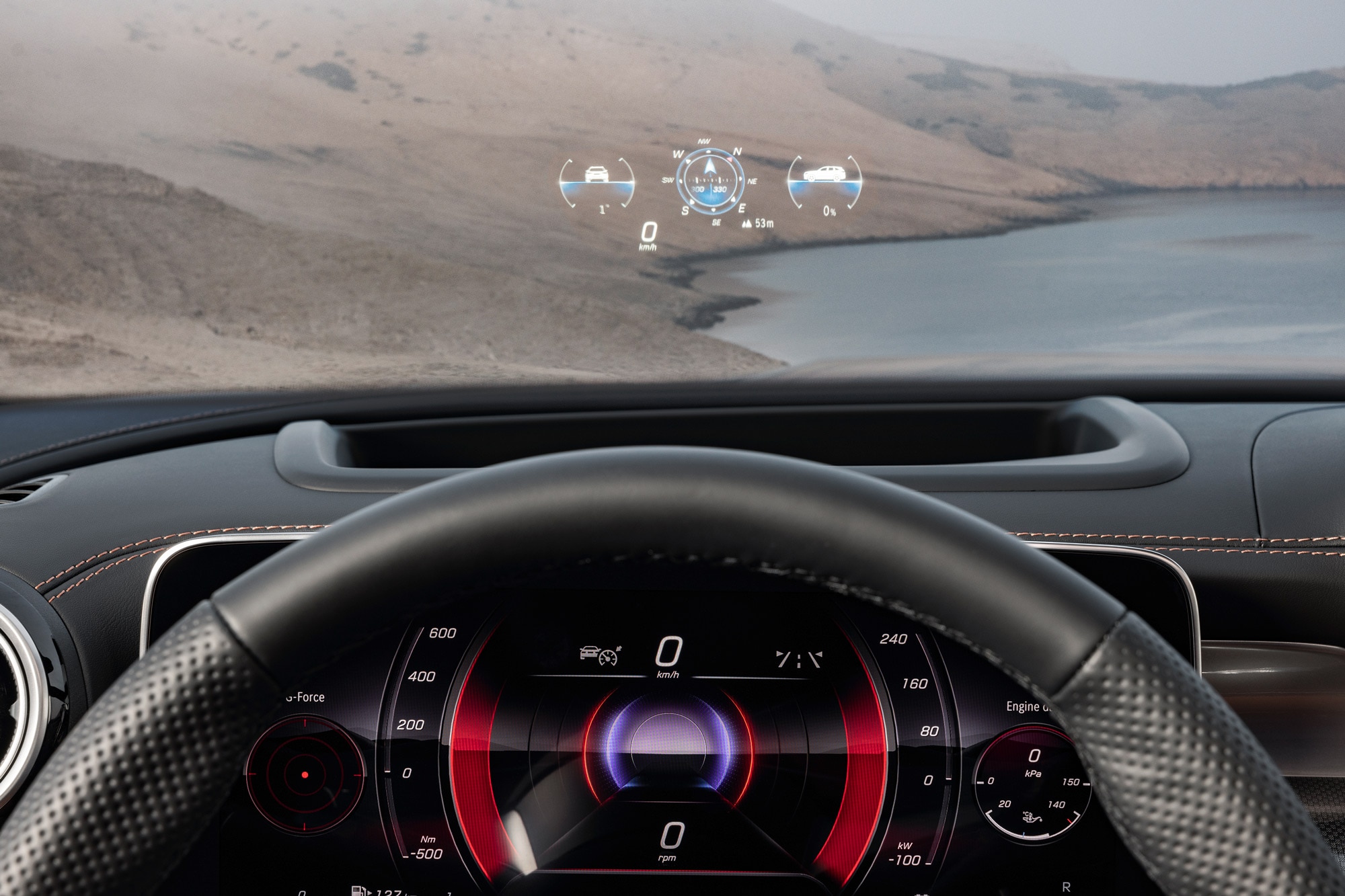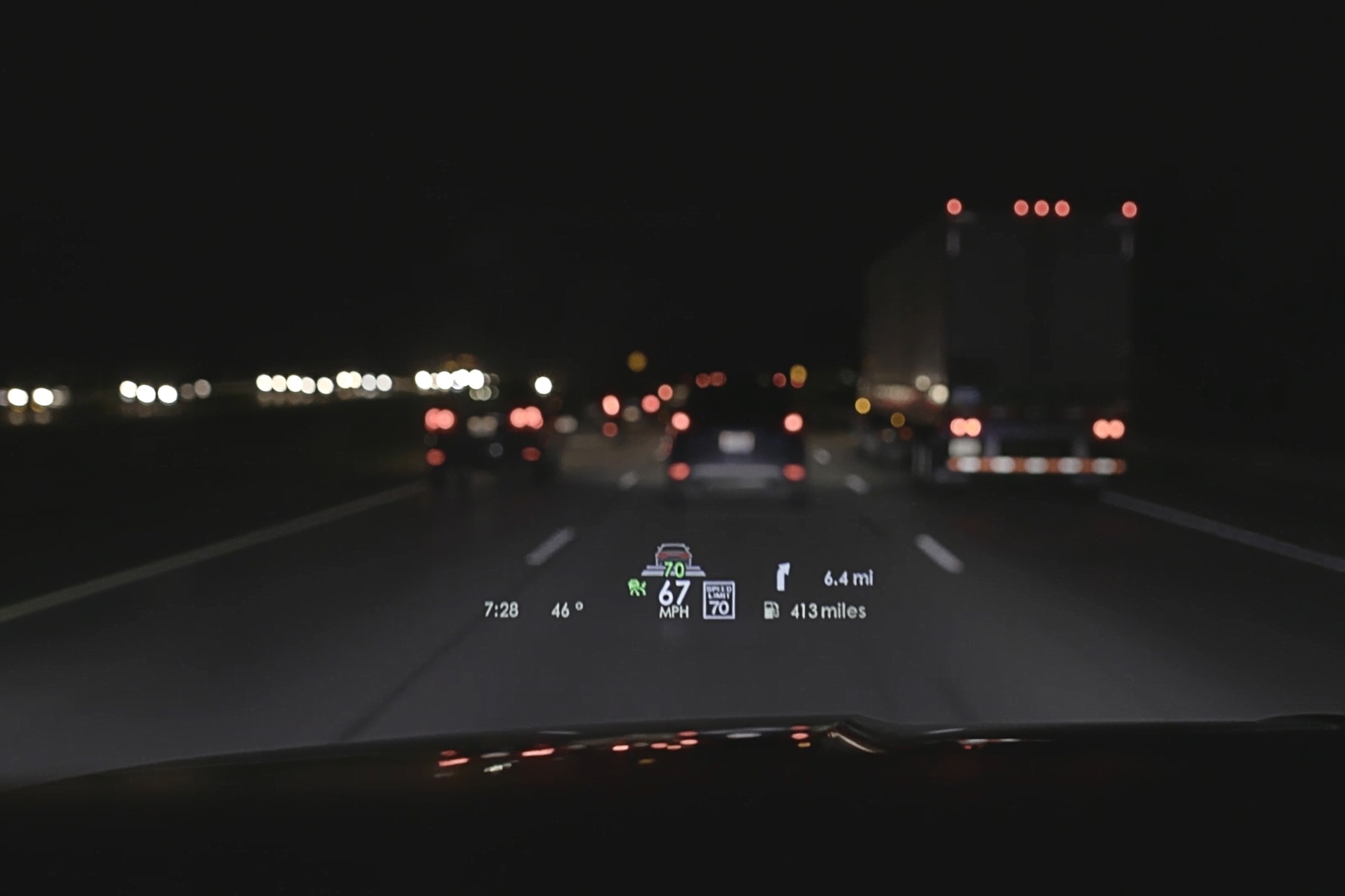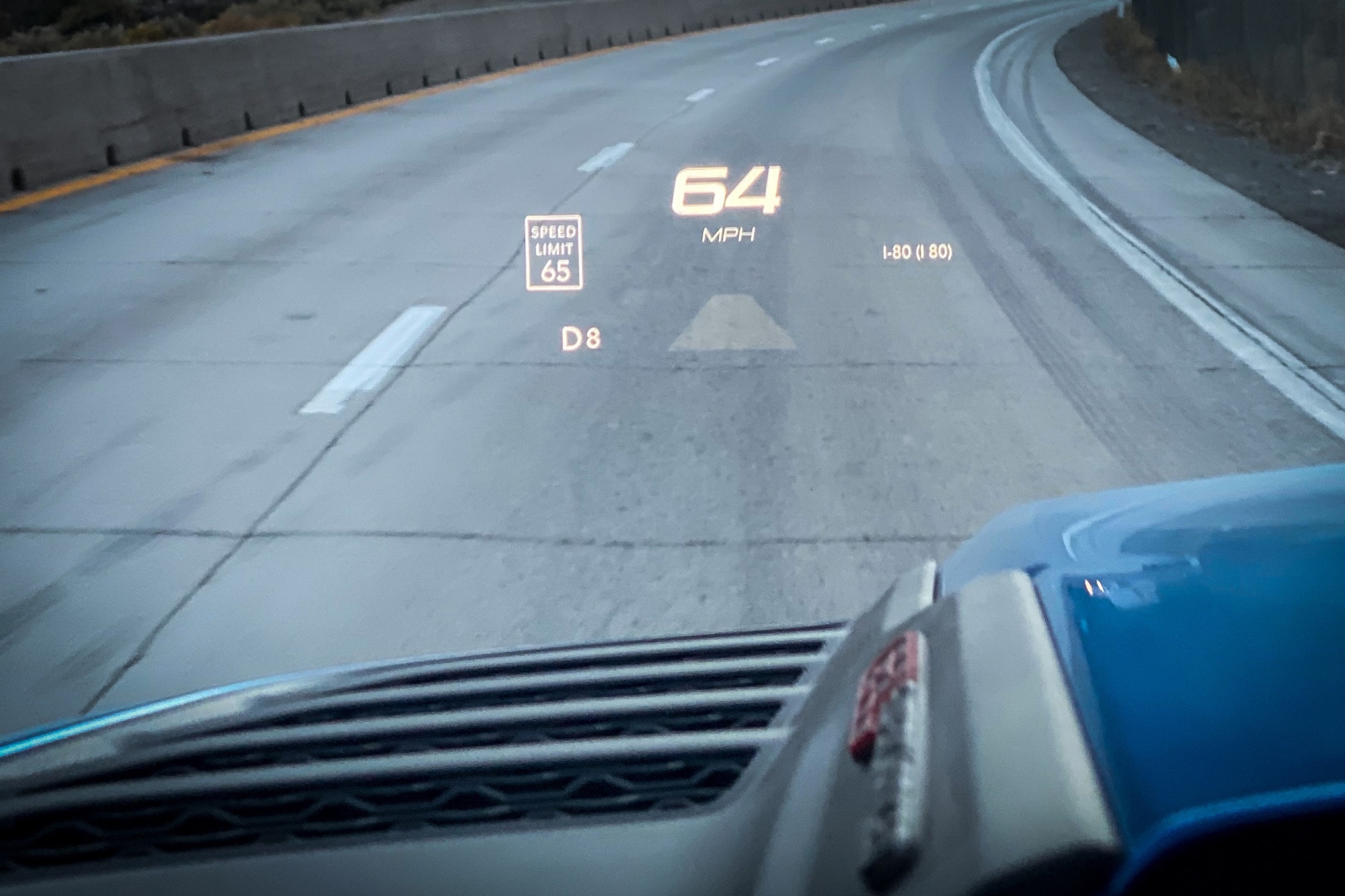Head-Up Displays: From F-16s to Your Car
Reflective windshield displays put data where it's easily seen.
Since the early days of the automobile, drivers have had to look away from the view ahead in order to get important information from gauges and indicators, often at the expense of safety. Workarounds that helped bring our eyes up a bit, such as hood-mounted tachometers and fender-mounted turn signal indicators, didn't really solve the fundamental problem that drivers were moving their focus away from the road.
Automakers found a solution in aircraft technology, bringing the head-up display from the skies to the street.
 Mercedes-Benz
Mercedes-Benz
Reflective Displays Were First Developed for Fighter Pilots
When speeds increased and weaponry for military aircraft became more powerful, fixed optical gunsights in combat planes became nearly useless. Gunsights that computed trajectories and helped pilots calculate their aim were developed during the 1930s, and they used earlier reflector sight technology to show information on a transparent display directly in front of the pilot's eyes.
Eventually, information from radar and other sources would be added to such displays, with this technology becoming commonplace in high-performance aircraft by the 1970s.
 Ford
Ford
Head-Up Displays Made the Jump to Ground Vehicles
Vehicle manufacturers in the United States installed head-up display mockups and then the real thing in concept cars and prototypes during the 1950s and 1960s, but it wasn't until the late 1980s — after the first in-car navigation system — that new production vehicles were built with factory-installed head-up displays.
Benefitting from the purchase of Hughes Aircraft in 1985, General Motors led the way in automotive electronics with a sophisticated head-up display. Based on vacuum-fluorescent technology, the automaker's 1988 Oldsmobile Cutlass Supreme had a display reflecting the speedometer and other data. The numbers appeared to be hovering in front of the vehicle. The GM display required a bulky dash-top housing at first but soon moved into a recessed dash opening.
Nissan followed immediately, with other manufacturers jumping on the reflective-display bandwagon later.
 Ford
Ford
How Head-Up Displays Work
The current crop of automotive head-up displays can be found in various vehicles, from BMW and Lincoln SUVs to Ford and Ram trucks. They use a video display that directs a reflected image to the windshield glass — or to a separate transparent panel between the windshield and the driver — or is itself embedded between layers within the windshield glass.
The simplest head-up displays show the basics: current speed, fuel level, turn signals, and a user-configurable selection of information. Move up to the more futuristic versions, such as Mercedes-Benz's augmented reality HUD, and you might see animated navigation symbols, enhanced night vision, and other features for greater convenience and safety.
Automotive head-up displays can be adjusted for position and brightness for the most comfortable and least distracting viewing.
Written by humans.
Edited by humans.
 Murilee Martin
Murilee MartinMurilee Martin is the pen name of Phil Greden, a Colorado-based writer who appreciates Broughams d'Elegance, kei cars, Warsaw Pact hoopties, and the Simca Esplanada.
Related articles
View more related articles